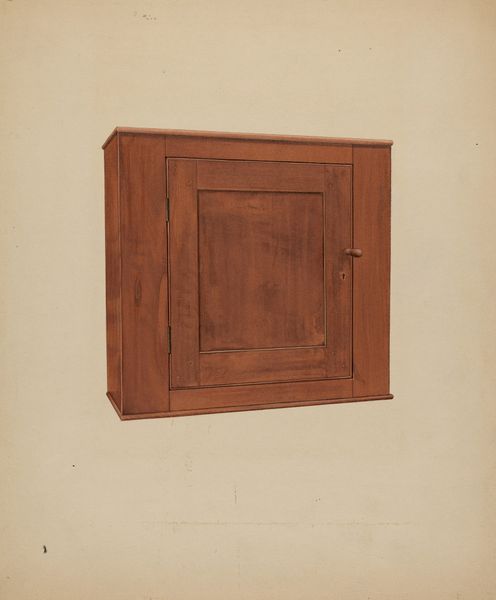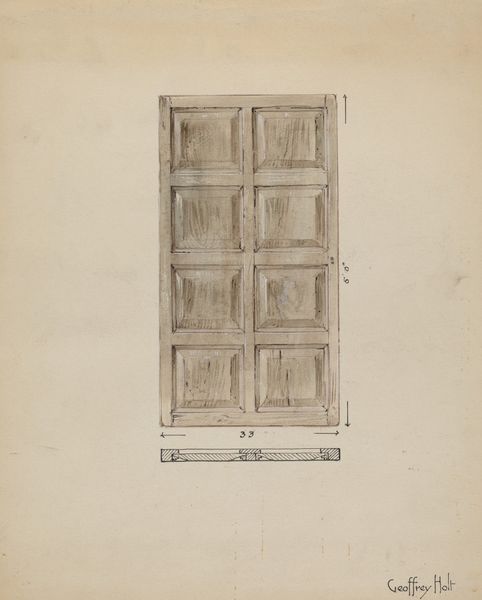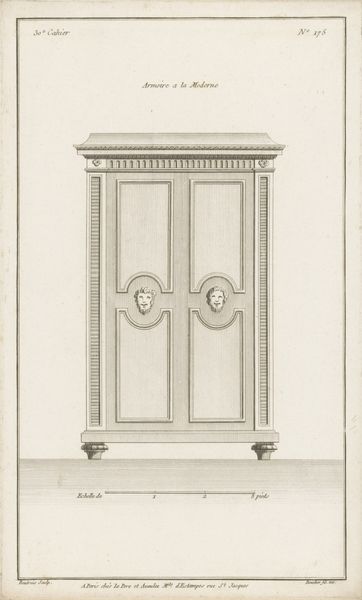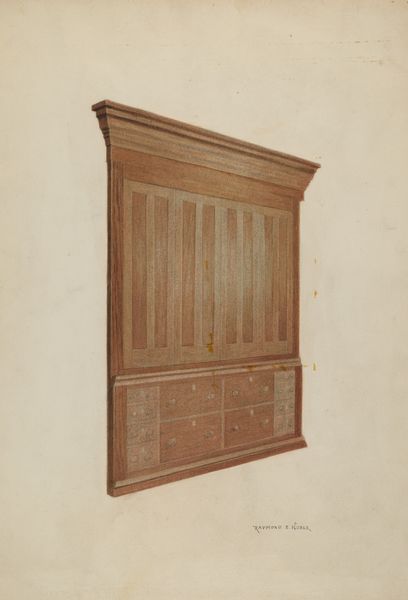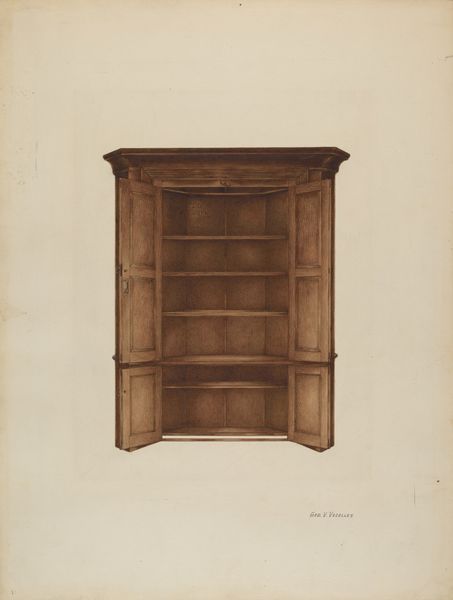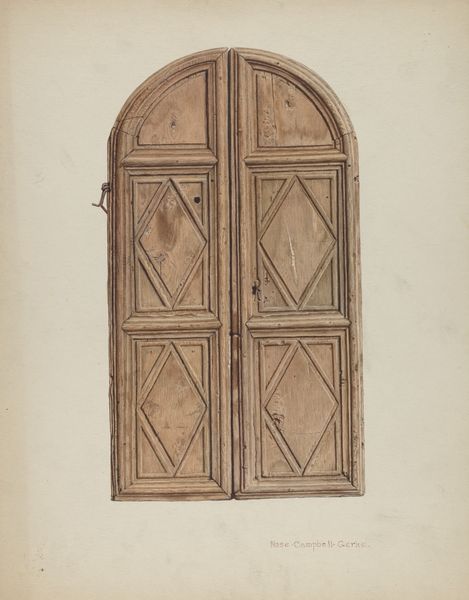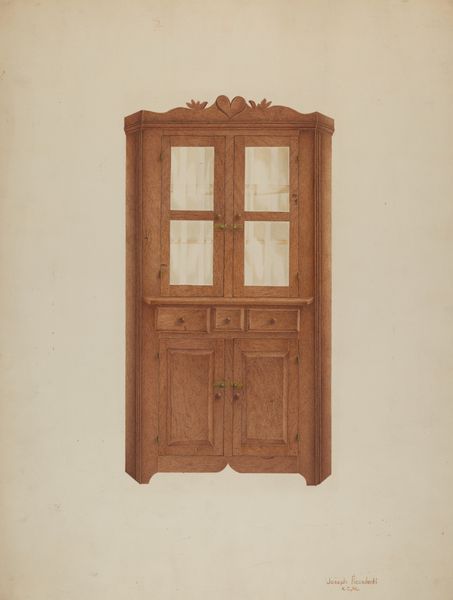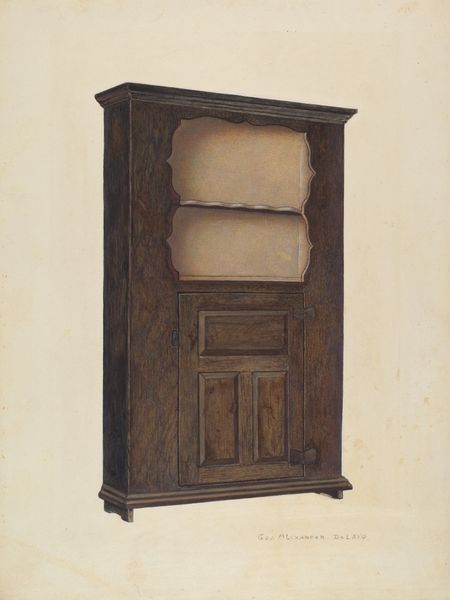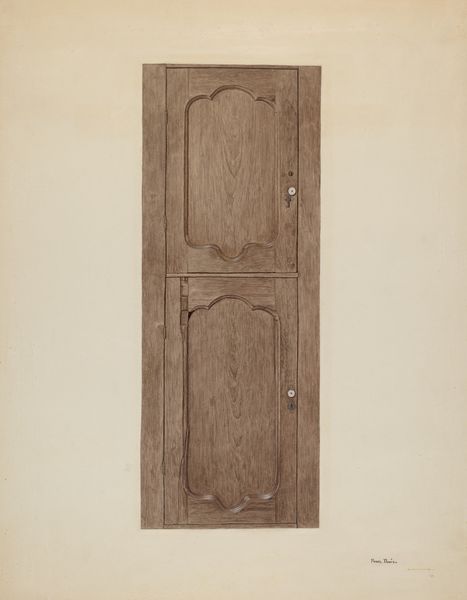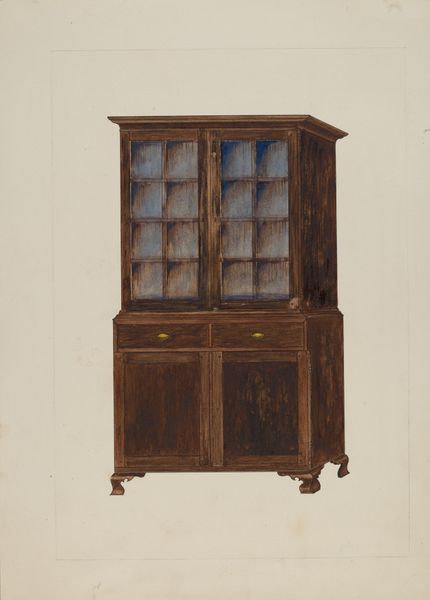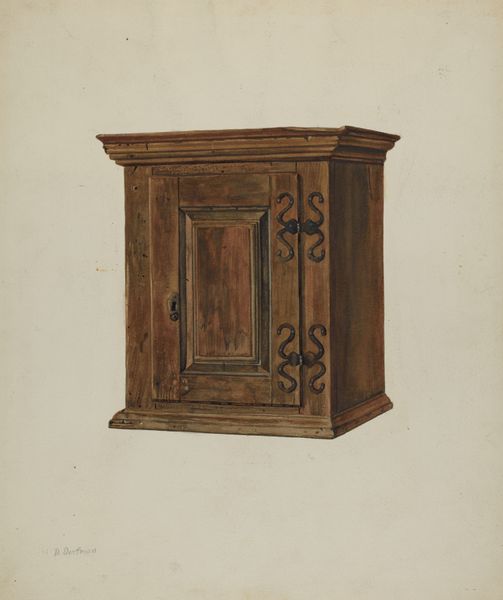
drawing, pencil
#
drawing
#
pencil
#
academic-art
#
realism
Dimensions: overall: 30.4 x 23.9 cm (11 15/16 x 9 7/16 in.) Original IAD Object: 78 7/8" high; 47 3/8" wide
Copyright: National Gallery of Art: CC0 1.0
Editor: This pencil drawing from around 1938, titled "Shaker Room Cupboard" by George V. Vezolles, strikes me as so...stark. It’s just this cupboard and some framing. What do you see in this piece? Curator: I see an explicit attempt to document and preserve a specific mode of production. Consider the Shaker commitment to functionality and simplicity in their crafts. The cupboard here isn't just a piece of furniture; it embodies their values of honest labor and communal living. Editor: So the drawing is capturing a whole economic system, not just the object itself? Curator: Precisely! The artist, in rendering this cupboard with such precision, is also documenting a way of life that prioritizes utility over ornamentation, reflecting a critique of capitalist excess during its time. The means of production – simple tools, local materials, community effort – are implicitly highlighted through the cupboard's very form. Notice how the drawing's medium, pencil, mirrors this straightforward approach, emphasizing functionality and lack of pretension, which are aligned with the Shakers' values. Editor: That’s interesting. It reframes something that I’d just see as a simple drawing as something tied to social critique and how it was made. Curator: It forces us to ask: what labor went into both the making of the cupboard and its depiction? Who benefited from this labor, and what was consumed in the process? The art challenges our conceptions about artistic skill in opposition to everyday crafting. Editor: It’s much more complex than I initially thought. Now I see it less as a drawing and more like a document about how things are made and consumed. Curator: Exactly! Art becomes less about aesthetics and more about understanding the material conditions and social relationships that shape our world.
Comments
No comments
Be the first to comment and join the conversation on the ultimate creative platform.
